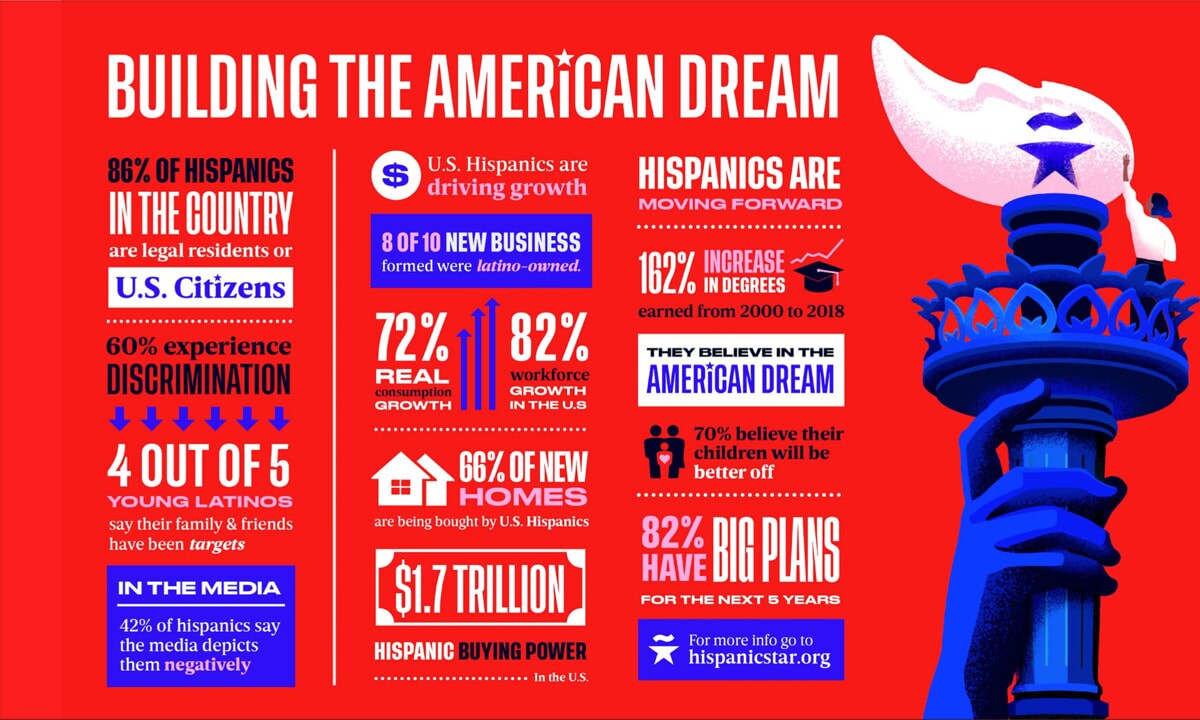Happy first day of Hispanic Heritage Month! We celebrate our contributions to the United States every day; however, from September 15 to October 15, our names and last names, our banderas, language, culture, sazón, folklore, music, art, and the people get the chance to shine brighter, louder and everywhere.
It is not a secret that the Hispanic, Latinx, and indigenous community is an undeniable force for progress and has made and continues making an impact in this beautiful country. But unfortunately, according to Hispanic Star, 77% of Hispanics are not aware of their contributions to the nation.
There is still a long way to go and a critical gap that needs to be addressed. Representation, disparity, and equal pay affect every single one of us. Still, we continue working hard and walking on the right track.
The Pew Research Center reported that the United States’ Hispanic population grew in the last 50 years. And there are nearly 60 million of us, and almost three-quarters of U.S.-born Latinos are Millennials or younger.
The 2020 LDC U.S. Latino GDP Report revealed that:
- The Latino GDP in the United States was $2.6 trillion in 2018, up from $1.7 trillion in 2010. The economic contribution of Latinos grew 72% faster than non-Latino GDP from 2010-2018.
- The number of educated Latinos rose by 63.1% during 2010-2018, while for non-Latinos, it rose by only 23.9%.
- Latino households grew 23.2% from 2010-2018, while non-Latino families only grew by 3.8%.
- Despite being only 18.3% of the U.S. population, Latinos are responsible for 78% of the U.S. labor force growth since the Great Recession.
NIELSEN’s report “Being Seen On Screen: Diverse Representation And Inclusion On Tv” revealed how different groups are represented in television in the U.S. Among their findings, “the Hispanic population is the largest minority group in the U.S., making up 18.8% of the people of the country, contributing more to the total population than any other segment. With nearly 40% of Latinos living in multigenerational households, content consumption and cross viewing are the norms.”
However, “Hispanics are still underrepresented across every platform. Across all TV, Hispanic’s share of the screen is only one-third of their presence in population estimates.”
The “State Of Latino Entrepreneurship” report from Stanford Graduate School Of Business revealed insights into Latino-owned businesses.
The key findings show:
- Over the past ten years, Latino business owners have grown by 34 percent, versus 1 percent for all business owners in the United States.
- Were it not for the growth in Latino-owned firms, the total number of small businesses in the U.S. would have declined between 2007 and 2012.
- From 2018 to 2019, Latino-owned businesses reported average revenue growth of 14 percent, outpacing the development of the overall U.S. economy.
- Latinos are starting businesses at a faster rate than the national average across almost all industries. The number of employer LOBs (Latino-owned employer businesses) has grown by 14% between 2012 to 2017, over twice the U.S. average of 6%.
- Additionally, the number of employer LOBs (Latino-owned employer businesses) grew across 44 out of 50 U.S. states. It grew faster than the national industry average across 13 of the 15 industry sectors, including a substantial number (over 1,000) of employer LOBs. Among these industries, the growth rate is highest in the following sectors: 1) Construction, 2) Finance and Insurance, 3) Transportation and Warehousing, 4) Real Estate.
- Latinas represent 40% of all Latinx business owners, and the number of Latina-led employer firms has grown 20% within the last five-year period of data available. (U.S. Census Bureau. (2020). 2018 Annual Business Survey and 2012 Survey of Business Owners).
,type=downsize)
